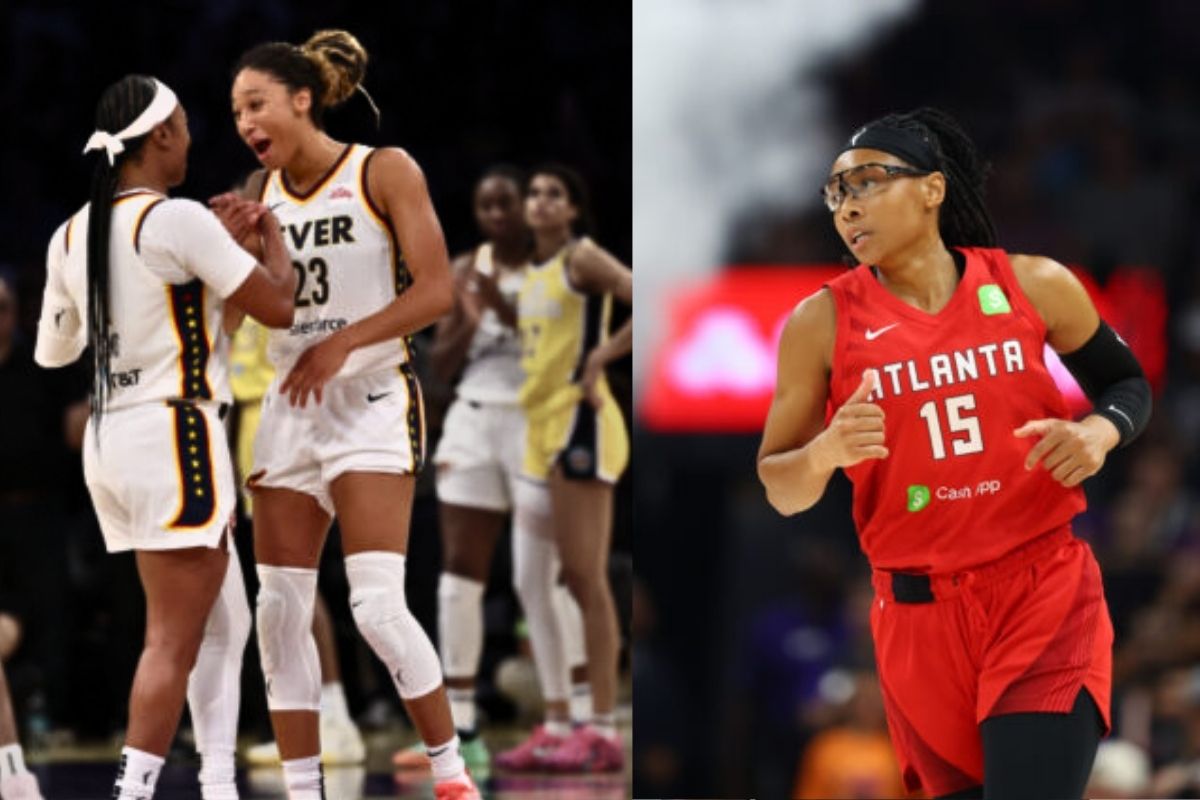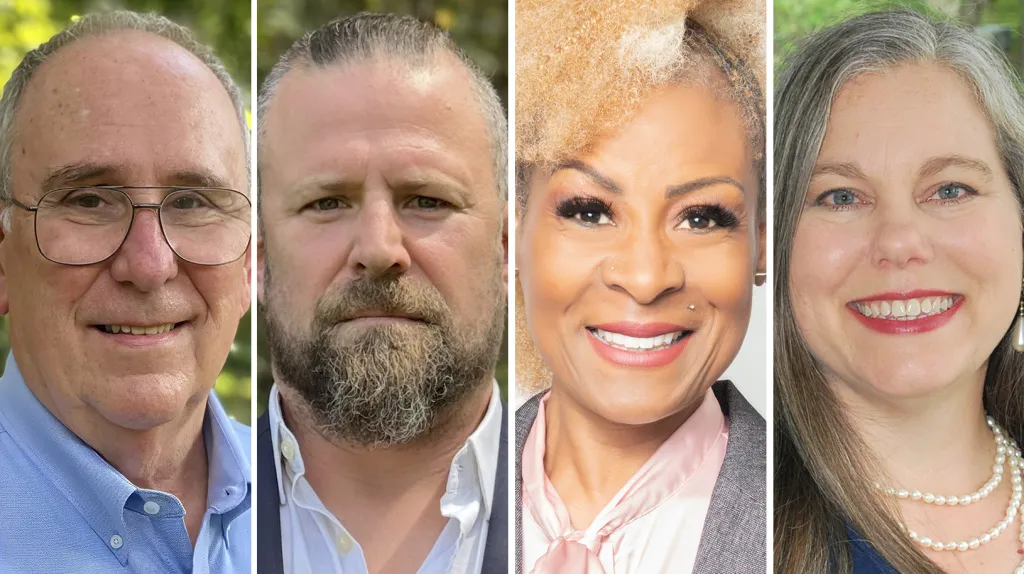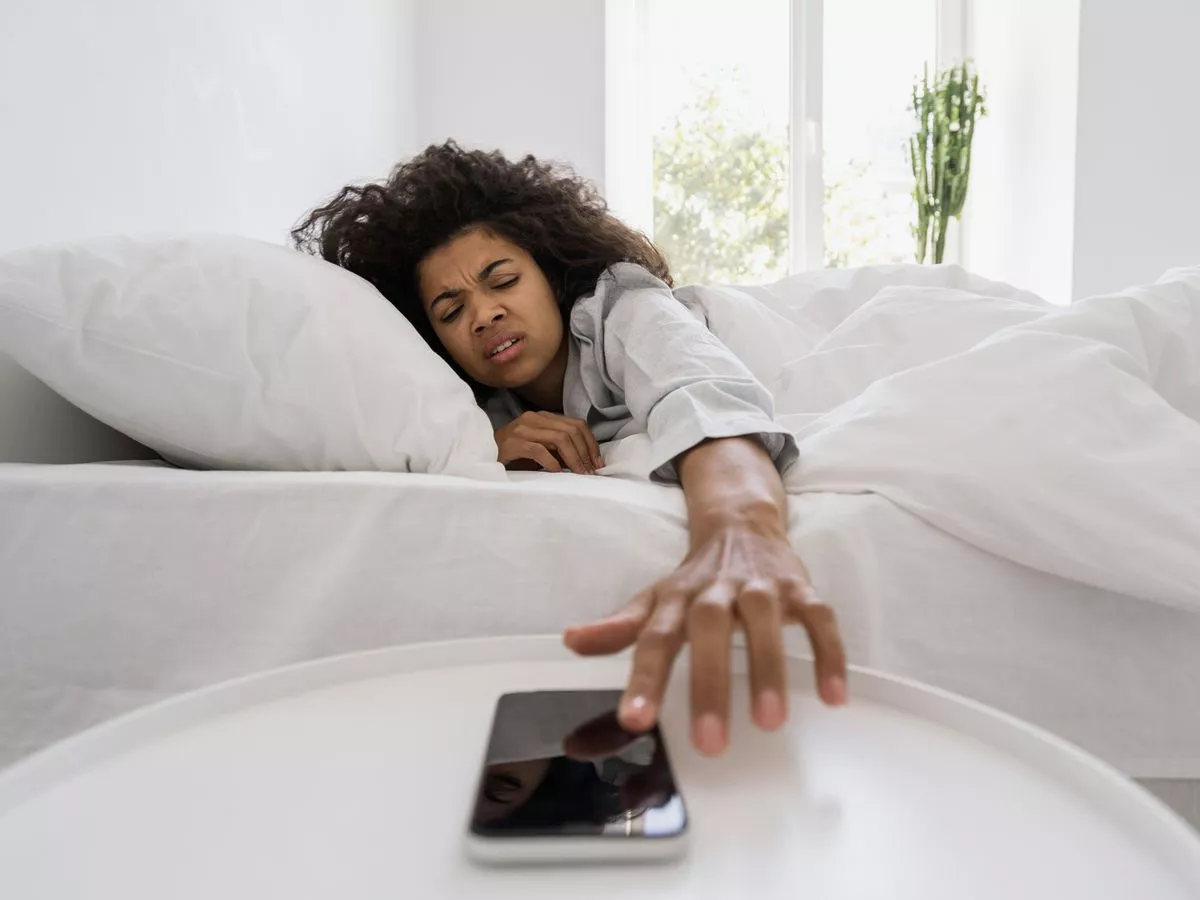
We have seen it happen before this season. A fan was ejected from a July 15 matchup between the Fever and the Sun for making a comment towards Saniya Rivers. The fan was later identified as an off-duty police officer. And so the Bridgeport police union president Michael Salemme III stepped in to defend the officer, tagging the courtside exchange as nothing more than “innocent fun.” “It’s nothing more than a fan who was excited for the game and who supports the WNBA,” Salemme said in a statement, adding, “He spent a lot of money for courtside seats and should not have been ejected.”
Once again, a similar scene has unfolded at an Indiana Fever game. And a similar reaction has followed. This time, it involved Atlanta Dream guard Allisha Gray, who was at the center of an exchange that led to two Fever fans being ejected from their courtside seats at Gainbridge Fieldhouse on Tuesday night.
The incident unfolded with just over six minutes left in Indiana’s 77–60 victory. Gray, captured on fan videos, turned toward the stands mid-play and appeared to respond to remarks from the crowd. She soon alerted arena security, and the fans were promptly removed from their courtside seats, according to USA Today. Gray seemed shaken in the aftermath, returning to her bench where a teammate comforted her. She did not speak to the media following the game. However, WNBA analyst Mick Talk Hoops thinks the Gray’s reaction was worthy of being called an overreaction.
ADVERTISEMENT
Article continues below this ad
Speaking on the latest edition of his Mick Talk Hoops podcast, he said, “It’s heckling. It’s heckling. I hope nothing absolutely out of the line was said, but sports heckling is a thing.” Sure, heckling and trash talk have always been part of sports. Plenty of athletes even admit that it fuels them, pushing them to perform better just to silence the crowd. As Damion Lee once said that Steph Curry would sometimes type his own name into Twitter during halftime, scroll through mentions or tweets about himself for a minute or two, then put his phone down and “go crazy” in the second half.
Curry has himself admitted how much he loves a brash crowd. “There were some fans heckling, which was awesome. And me and Draymond were talking about, there’s no better feeling… I don’t care if it’s 19,000 or 2,500 or whatever it is – you love silencing a road crowd,” Curry said. But it’s not like Gray is new to the sport. When a veteran who’s been in the league since 2017 reacts the way she did, it suggests the situation was more than just routine banter. Mick, however, still had his own theory — one he believes could explain everything.
ADVERTISEMENT
Article continues below this ad
In the same podcast, he hinted towards Allisha Gray’s frustratingly poor night to be a factor that pushed her over the edge. With Atlanta having won game 1 of the series, last night’s game was a chance for them to get an early entry into the second round and get extra rest. However, Indiana dominated the game and leveled the series with a 77-60 win. In that game, Allisha was only able to score 9 points on a 4-16 shooting night. According to Mick, her dismal performance could be the reason why she reacted the way she did. Per him, it was a combination of her frustrating performance and fans’ heckling that led to the ejection.
Until there’s clarity on what was actually said, it’s difficult to pass judgment. What can’t be denied, though, is that incidents like this seem to surface far too often at Fever games. Back on May 17 against the Chicago Sky, the league even launched an investigation after reports of racist remarks from fans. The probe ultimately found no conclusive evidence, but simply being linked to such accusations doesn’t reflect well. And with Indiana on the brink of something special this season, headlines like these risk pulling focus away from the team’s performance on the court.
Is fan heckling going too far?
Larry Bird answers the question far better than anyone else. “I remember watching a father cursing our players right in front of his son, and it wasn’t long before his son was doing it. I couldn’t believe it,” Bird said. “How would you like to be at a game with your family and the guy next to you is drunk, and everything out of his mouth is sewage?” And so he continued, “I know the league doesn’t want to escort these people out unless they’re too unruly, but we’ve got to stand up to these fans. They don’t have a right.”
Sure, those comments were about the NBA. But the WNBA now faces similar concerns. The recent incidents aren’t isolated, they signal a pattern that could become deeply harmful if unchecked. The problem is magnified in women’s sports, where in-person heckling often mirrors online trolling spilling into arenas.
ADVERTISEMENT
Article continues below this ad
A BBC Sport survey (2020) found that 30% of elite female athletes had experienced online trolling. A World Athletics study on Facebook and Twitter abuse during the Tokyo 2020 Olympics revealed that women received 87% of all targeted harassment. In Australia, professional sportswomen are three times more likely than men to face negative online comments.
The WNBA has introduced initiatives like “No Space for Hate” to tackle the issue. But policies alone are not enough. The league must act decisively: remove offenders, strengthen arena security, and hold spectators accountable. Athletes deserve to compete in an environment where their skills, not the noise of abuse, take center stage. And they deserve a bit of grace, too. They deserve the space to act like humans after such incidents. As Caitlin Clark once said, “Nobody in our league should be facing any sort of racism, hurtful, disrespectful, hateful comments and threats. Those aren’t fans, those are trolls, and it’s a real disservice“.



